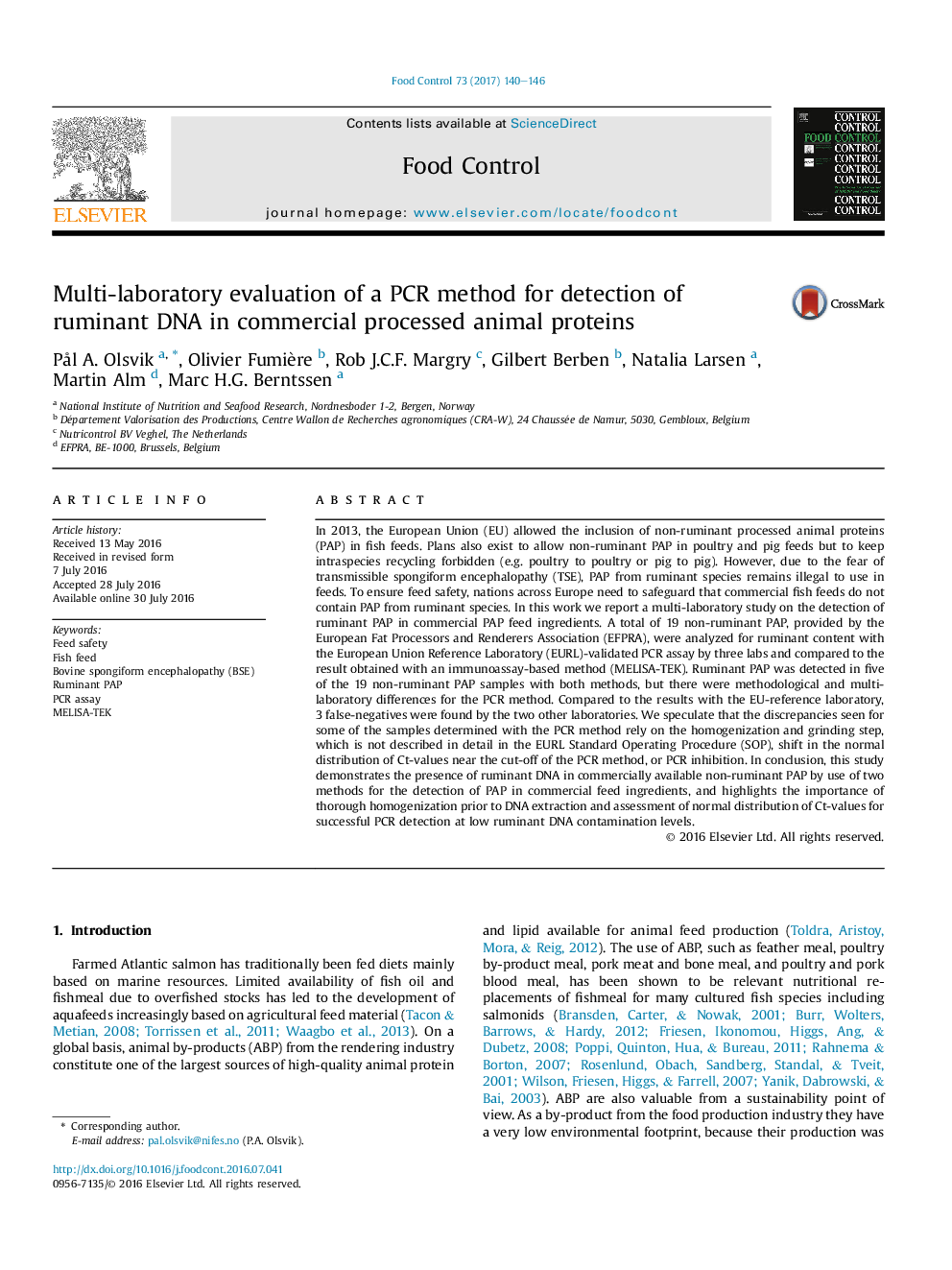| کد مقاله | کد نشریه | سال انتشار | مقاله انگلیسی | نسخه تمام متن |
|---|---|---|---|---|
| 5767624 | 1413202 | 2017 | 7 صفحه PDF | دانلود رایگان |

- Fish feeds should not contain PAPs from ruminant species.
- 19 non-ruminant PAPs were analyzed for ruminant content with PCR by three labs.
- The PCR results was compared with an immunoassay-based method (MELISA-TEK).
- Ruminant PAP was detected in five of the 19 non-ruminant samples with both methods.
- Inter-laboratory differences for the PCR method was detected for three samples.
In 2013, the European Union (EU) allowed the inclusion of non-ruminant processed animal proteins (PAP) in fish feeds. Plans also exist to allow non-ruminant PAP in poultry and pig feeds but to keep intraspecies recycling forbidden (e.g. poultry to poultry or pig to pig). However, due to the fear of transmissible spongiform encephalopathy (TSE), PAP from ruminant species remains illegal to use in feeds. To ensure feed safety, nations across Europe need to safeguard that commercial fish feeds do not contain PAP from ruminant species. In this work we report a multi-laboratory study on the detection of ruminant PAP in commercial PAP feed ingredients. A total of 19 non-ruminant PAP, provided by the European Fat Processors and Renderers Association (EFPRA), were analyzed for ruminant content with the European Union Reference Laboratory (EURL)-validated PCR assay by three labs and compared to the result obtained with an immunoassay-based method (MELISA-TEK). Ruminant PAP was detected in five of the 19 non-ruminant PAP samples with both methods, but there were methodological and multi-laboratory differences for the PCR method. Compared to the results with the EU-reference laboratory, 3 false-negatives were found by the two other laboratories. We speculate that the discrepancies seen for some of the samples determined with the PCR method rely on the homogenization and grinding step, which is not described in detail in the EURL Standard Operating Procedure (SOP), shift in the normal distribution of Ct-values near the cut-off of the PCR method, or PCR inhibition. In conclusion, this study demonstrates the presence of ruminant DNA in commercially available non-ruminant PAP by use of two methods for the detection of PAP in commercial feed ingredients, and highlights the importance of thorough homogenization prior to DNA extraction and assessment of normal distribution of Ct-values for successful PCR detection at low ruminant DNA contamination levels.
Journal: Food Control - Volume 73, Part B, March 2017, Pages 140-146